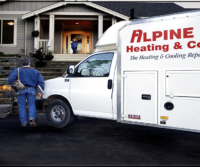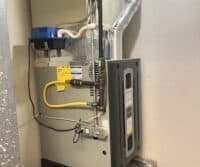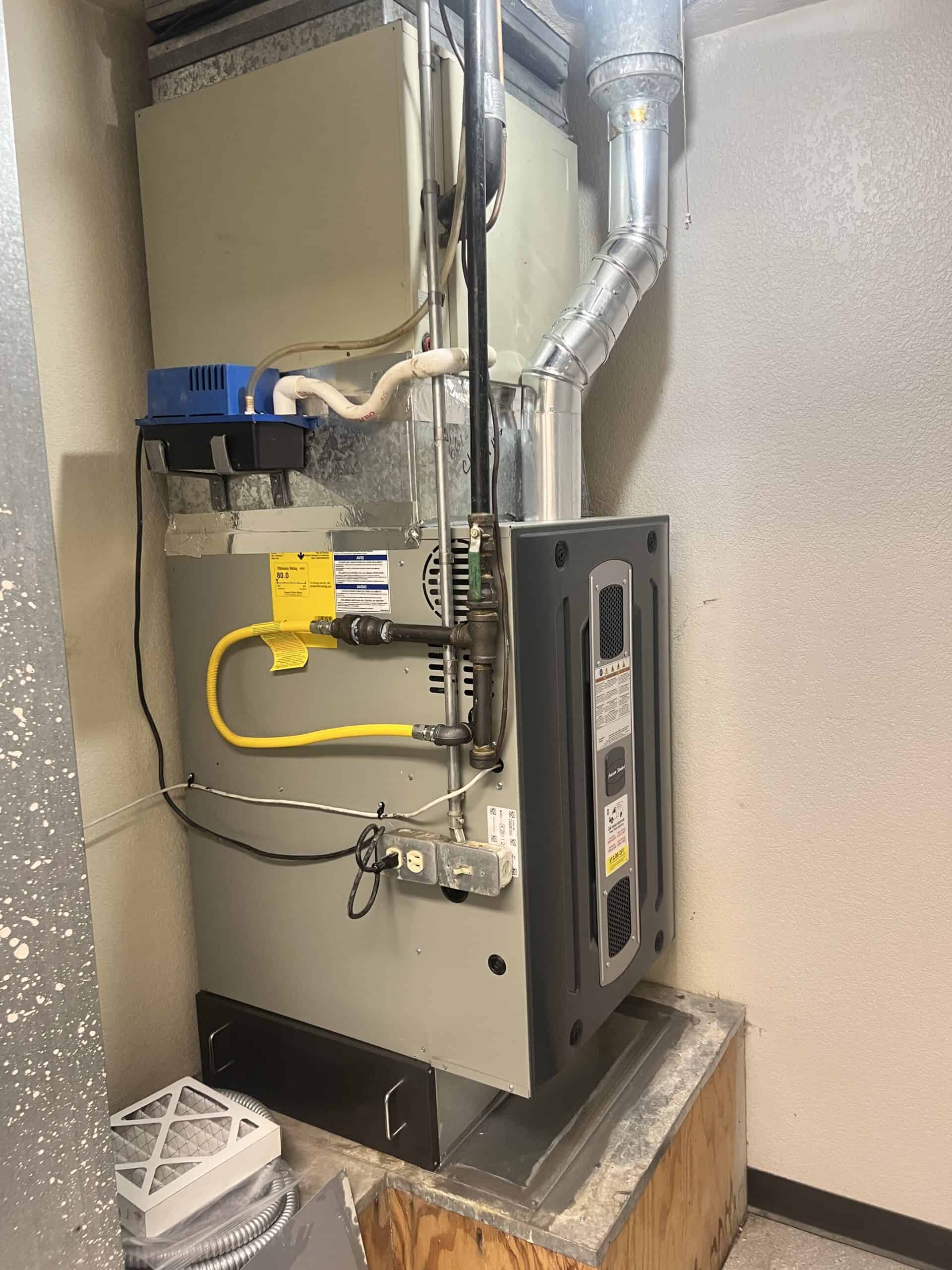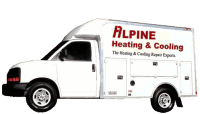
As the holiday season approaches, all of us here at Alpine Heating and Cooling want to take a moment to express our heartfelt gratitude to the wonderful community of Burlington, Washington, and beyond. It’s been another incredible year of keeping your homes warm, your workplaces comfortable, and your lives running smoothly. Now, as we gather with loved ones and reflect on what truly matters, we want to thank you for letting us be a part of your lives.
Spreading Holiday Cheer
At Alpine Heating and Cooling, we understand the importance of creating a cozy, welcoming environment during this special time of year. Whether it’s keeping your home toasty for holiday gatherings or ensuring your business is comfortable for customers and employees alike, we take pride in helping you make the season as warm and joyful as possible.
This holiday season, we hope you’re able to enjoy the things that matter most—time with family, laughter with friends, and a little rest and relaxation by the fire. And don’t forget: if you need us, we’re just a phone call away to help keep the chill outside where it belongs.
Reflecting on Community
Burlington is more than a place we work—it’s our home. This community inspires us every day with its kindness, resilience, and spirit. We’ve been fortunate to serve so many of you, whether it’s repairing your furnace on a frosty morning, installing a new energy-efficient HVAC system, or offering advice on keeping utility bills manageable during the colder months.
Your trust and support mean the world to us, and we’re committed to serving you with the same dedication and care for years to come.
Looking Ahead to the New Year
As we celebrate the close of another year, we’re excited about what’s to come. At Alpine Heating and Cooling, we’re always looking for ways to improve—whether it’s offering new technologies, finding ways to serve you better, or supporting local initiatives.
We’re grateful for the opportunity to grow alongside this amazing community and look forward to continuing to meet your heating and cooling needs in 2025.
A Warm Holiday Wish
From all of us at Alpine Heating and Cooling, we wish you a holiday season filled with warmth, love, and happiness. May your days be merry and bright, and may your home be cozy and comfortable, no matter what the weather outside may bring.
Thank you for making Alpine Heating and Cooling a part of your lives. Here’s to a joyful holiday season and a fantastic new year!
Stay warm,
The Alpine Heating and Cooling Team

As the temperature begins to drop, preparing your home for winter becomes essential to ensure warmth, comfort, and energy efficiency throughout the season. Winterizing your home not only helps keep your family cozy but also reduces energy costs and minimizes the risk of unexpected HVAC issues. Taking a few proactive steps can make all the difference in maintaining a comfortable indoor environment.
The first step in winterizing your home is ensuring that your HVAC system is in peak condition. Scheduling a professional inspection is crucial to identify and address any potential issues before the system is under constant demand. Replacing air filters is another vital task; clean filters allow for optimal airflow and prevent your heating system from overworking. For maximum efficiency, consider upgrading to a programmable or smart thermostat, which can help regulate temperatures and save on energy costs.
Sealing air leaks around your home is another important aspect of winter preparation. Drafts around windows, doors, and other openings can allow warm air to escape, making your HVAC system work harder. Applying weatherstripping, caulking gaps, and inspecting areas like attics and basements for insulation needs can significantly improve your home’s energy efficiency. Additionally, leaky ductwork can reduce heating effectiveness, so it’s wise to have it professionally sealed if needed.
Don’t overlook the importance of proper insulation throughout your home. Adding insulation to attics, walls, and crawl spaces can prevent heat loss and keep your home consistently warm. Protecting your pipes with insulation sleeves also prevents freezing and potential bursts during extreme cold.
Lastly, remember to care for your outdoor HVAC components by clearing debris, inspecting for damage, and protecting them with covers designed to withstand winter weather. By taking these steps, you can enjoy a warm, energy-efficient home all winter long.

As the leaves change color and temperatures drop, preparing your home and HVAC systems for the fall season becomes essential. Taking some time now to ensure everything is in order can help you stay comfortable, save money, and avoid potential problems when the chill of winter arrives. Here’s a comprehensive guide to help you get your home and HVAC systems ready for fall.
1. Inspect and Service Your HVAC System
Your heating, ventilation, and air conditioning (HVAC) system works hard to maintain a comfortable temperature year-round, so it’s important to give it some attention before fall sets in.
- Schedule a Professional Inspection: Have an HVAC technician conduct a thorough inspection. They will check for any issues, clean the components, and ensure your system runs efficiently. An inspection can identify problems early, potentially saving you from costly repairs during the colder months.
- Replace Air Filters: Dirty air filters can reduce the efficiency of your HVAC system and lower air quality in your home. Replace your air filters at the start of fall and check them monthly. This simple task can improve airflow, maintain system efficiency, and help keep your energy bills in check.
- Test Your Thermostat: Ensure your thermostat is functioning correctly and consider upgrading to a programmable or smart thermostat. This allows you to set schedules, control temperatures remotely, and reduce energy consumption when you’re not home, optimizing your heating system’s efficiency.
2. Seal and Insulate Your Home
A properly sealed and insulated home can make a big difference in energy efficiency and comfort levels.
- Check for Drafts: Inspect windows, doors, and any other openings for drafts. Use weatherstripping and caulk to seal any gaps or cracks. This prevents warm air from escaping and cold air from entering, helping your HVAC system work more efficiently.
- Inspect Insulation: Ensure your home’s insulation is adequate, especially in the attic, basement, and crawl spaces. Proper insulation helps maintain a consistent temperature, reducing the strain on your HVAC system and lowering energy bills.
3. Clean and Inspect Ductwork
Dirty or leaky ductwork can significantly affect the performance of your HVAC system.
- Inspect Ductwork for Leaks: Check for any visible signs of leaks or damage in your ductwork. Sealing any leaks with duct tape or mastic can improve airflow and reduce energy loss.
- Clean the Ducts: Over time, dust, debris, and allergens accumulate in your ducts. Consider having your ductwork professionally cleaned to ensure good air quality and efficient system performance.
4. Prepare Your Furnace
Before the colder months arrive, your furnace needs to be in peak condition.
- Check the Furnace Flame: Ensure the flame in your furnace is blue, indicating it’s burning efficiently. If the flame is yellow or orange, it may indicate a problem, such as a gas leak or dirty burner, requiring professional attention.
- Clear the Area Around the Furnace: Remove any clutter, dust, or flammable materials around your furnace to ensure proper airflow and reduce the risk of fire.
5. Inspect and Clean Your Chimney and Fireplace
If you have a chimney or fireplace, regular maintenance is crucial for safety and efficiency.
- Schedule a Chimney Inspection and Cleaning: A professional chimney sweep can remove soot, creosote, and any obstructions that could cause a fire hazard. Regular cleaning also ensures proper ventilation when using your fireplace.
- Check the Damper: Make sure your fireplace damper opens and closes properly to prevent drafts and maintain energy efficiency.
6. Maintain Your Outdoor Unit
If you have an outdoor HVAC unit, it’s essential to prepare it for the fall season.
- Clear Debris: Remove leaves, twigs, and any debris around your outdoor unit. This helps ensure proper airflow and prevents damage to the system.
- Check the Unit for Damage: Inspect your outdoor unit for any signs of wear and tear, such as rust, cracks, or loose connections. Addressing these issues promptly can prevent further damage.
7. Reverse Ceiling Fans
Ceiling fans aren’t just for summer—they can help keep your home comfortable in the fall and winter, too.
- Reverse the Fan Direction: Most ceiling fans have a switch to change the direction of the blades. In the fall, set your fan to rotate clockwise at a low speed. This creates an updraft, pulling cool air up and pushing warm air down, which helps distribute heat more evenly throughout your home.
8. Inspect Weatherstripping and Door Seals
Keeping cold air out is just as important as keeping warm air in.
- Check Weatherstripping: Inspect and replace any worn or damaged weatherstripping around doors and windows to prevent drafts and heat loss.
- Install Door Sweeps: If you notice drafts under doors, consider installing door sweeps to block out cold air.
9. Check Smoke and Carbon Monoxide Detectors
Safety is paramount, especially when you’ll be using your heating system more frequently.
- Test Detectors: Make sure smoke and carbon monoxide detectors are working correctly. Replace batteries and test each unit to ensure they are functioning properly. Consider installing new detectors if yours are more than 10 years old.
10. Clean Gutters and Downspouts
Fall is known for its beautiful leaves, but those leaves can clog your gutters and downspouts.
- Clear Gutters: Remove leaves, twigs, and debris from your gutters and downspouts to prevent water damage to your roof, siding, and foundation. Proper drainage is essential to avoid leaks and ice dams during winter.
Getting your home and HVAC systems ready for fall is an investment in comfort, safety, and energy savings. By following these steps, you’ll be well-prepared for the colder months ahead, ensuring a cozy and efficient home all season long. Take the time now to inspect, clean, and maintain your home and HVAC systems to enjoy a worry-free fall and winter.
Remember, a little preparation goes a long way! Happy fall! 🍂

Attending a Skagit Valley beer festival is an unforgettable experience that combines the beauty of the Skagit Valley with the vibrant culture of craft brewing. Nestled in a region renowned for its picturesque mountain to sea landscapes, these festivals offer a magical blend of lush Valley, mountain, and sea views and the tantalizing aromas of fresh PNW hops. Here, you can indulge in a diverse selection of exceptional craft beers, each brewed with passion and creativity by local artisans. Beyond the craft beer, these festivals are a celebration of community and creativity, featuring live music, delicious food from local vendors, and engaging activities that highlight the unique spirit of Skagit Valley. Whether you’re a beer connoisseur or just looking for a fun and festive day out, the Skagit Valley beer festivals promise an enchanting experience filled with flavor, camaraderie, and the magic of the Valley’s vibrant brewing scene.

Installing air conditioning in your home or office can significantly enhance your comfort and quality of life. Air conditioning systems regulate indoor temperatures, creating a consistently cool environment during hot weather, which is essential for maintaining productivity and well-being. Additionally, modern air conditioning units improve air quality by filtering out pollutants, allergens, and dust, contributing to a healthier living space. By controlling humidity levels, air conditioning also helps prevent the growth of mold and mildew, protecting your property and health. Moreover, a well-maintained air conditioning system can increase the overall value of your property, making it a worthwhile investment.

When it comes to managing home expenses, heating, ventilation, and air conditioning (HVAC) systems are significant contributors. Efficient HVAC systems not only ensure comfort but also help in reducing energy bills. For residents of Skagit County, Washington, there are several tax breaks and rebates available to make upgrading to energy-efficient HVAC systems more affordable.
Why Upgrade Your HVAC System?
Upgrading to an energy-efficient HVAC system has several benefits:
- Lower Energy Bills: Modern systems use less energy, translating into significant savings.
- Enhanced Comfort: Improved technology means better temperature regulation and air quality.
- Environmental Impact: Reduced energy consumption means a smaller carbon footprint.
- Increased Home Value: Energy-efficient homes are more attractive to potential buyers.
Five Federal HVAC Tax Credits
1. Energy-Efficient Home Improvement Credit
The federal government offers tax credits for homeowners who invest in energy-efficient improvements, including HVAC systems. As of 2024, you can claim up to 30% of the cost of a qualified HVAC installation, with a maximum credit limit set by the IRS. This credit covers the cost of the unit and installation.
How to Claim:
- Ensure the HVAC system meets the energy efficiency requirements set by the Energy Star program.
- Keep all receipts and manufacturer’s certification statements.
- File IRS Form 5695 when you do your taxes.
2. Residential Energy Efficient Property Credit
The federal government offers a tax credit for homeowners who install qualified energy-efficient property, including certain HVAC systems that use renewable energy sources. As of 2024, you can claim up to 26% of the cost of installing solar panels, solar water heaters, and other renewable energy HVAC systems.
How to Claim:
- Ensure the HVAC system meets the energy efficiency requirements set by the Energy Star program.
- Keep all receipts and manufacturer’s certification statements.
- File IRS Form 5695 when you do your taxes.
3. Nonbusiness Energy Property Credit
Homeowners can receive a tax credit for installing energy-efficient HVAC systems in their primary residences. This credit covers 10% of the cost of qualified energy-efficient improvements, including HVAC systems, up to a maximum of $500 for all years combined from 2006 to 2024.
How to Claim:
- Ensure the HVAC system meets the energy efficiency requirements set by the Energy Star program.
- Keep all receipts and manufacturer’s certification statements.
- File IRS Form 5695 when you do your taxes.
4. Geothermal Heat Pump Tax Credit
The federal government offers a tax credit for homeowners who install geothermal heat pumps. As of 2024, you can claim up to 26% of the cost of installing a geothermal heat pump, including labor costs for on-site preparation, assembly, and installation.
How to Claim:
- Ensure the geothermal heat pump meets the energy efficiency requirements set by the Energy Star program.
- Keep all receipts and manufacturer’s certification statements.
- File IRS Form 5695 when you do your taxes.
5. Small Wind Energy Property Credit
Homeowners can receive a tax credit for installing small wind energy systems, which can be used for heating or cooling purposes. As of 2024, you can claim up to 26% of the cost of installing a wind turbine system.
How to Claim:
- Ensure the wind energy system meets the energy efficiency requirements set by the Energy Star program.
- Keep all receipts and manufacturer’s certification statements.
- File IRS Form 5695 when you do your taxes.
Maximizing Savings with Puget Sound Energy Rebates for Heating

Every spring, nature unleashes its artistic prowess in the Skagit Valley of Washington State, painting the landscape with vibrant hues of tulips. The Skagit Valley Tulip Festival stands as a testament to the breathtaking beauty and wonder that nature has to offer. In this blog post, we delve into the essence of this annual celebration, exploring its history, the spectacle of the blooms, and the experiences awaiting visitors. We know you have more on your mind than the Importance of Spring HVAC Servicing!

A Tapestry of Color: Imagine acres upon acres of meticulously cultivated tulip fields, stretching as far as the eye can see, each row boasting a different variety of tulips. The festival, during the month of April, showcases a kaleidoscope of colors ranging from deep reds and purples to soft pinks and sunny yellows. As the tulips burst into bloom, they create a captivating tapestry that attracts visitors from around the world.
History and Heritage: The origins of the Skagit Valley Tulip Festival date back to the 1940s when Dutch immigrants settled in the region and began farming tulips, reminiscent of their homeland. Over the years, the festival has evolved into a beloved tradition, drawing thousands of visitors annually. Beyond its aesthetic appeal, the festival also serves as a nod to the rich agricultural heritage of the Skagit Valley and the hard work of its farmers.
Exploring the Festival: Visitors to the Skagit Valley Tulip Festival are treated to a variety of experiences that celebrate the beauty of spring and the bounty of the region. From guided tours of the tulip fields to photography workshops and garden art displays, there’s something for everyone to enjoy. Local vendors offer fresh produce, artisanal crafts, and delicious treats, adding to the festive atmosphere.
Photography Paradise: For photography enthusiasts, the Skagit Valley Tulip Festival is a dream come true. The vibrant colors of the tulip fields combined with the backdrop of the snow-capped Cascade Mountains provide endless opportunities for stunning photographs. Whether you’re a professional photographer or simply snapping pictures with your smartphone, you’re sure to capture memories that will last a lifetime.
Tips for Visitors: To make the most of your visit to the Skagit Valley Tulip Festival, consider the following tips:
- Plan ahead and check the festival’s website for updated information on bloom status, events, and parking.
- Visit on weekdays or early mornings to avoid crowds and capture the best light for photography.
- Wear comfortable shoes and dress appropriately for the weather, as the festival is held outdoors.
- Be respectful of the tulip fields and follow designated pathways to avoid damaging the flowers.
- Take your time to soak in the beauty of the blooms and savor the moments spent amidst nature’s splendor.
The Skagit Valley Tulip Festival is more than just a feast for the eyes; it’s a celebration of nature’s resilience and the arrival of spring. Whether you’re a flower enthusiast, a photography buff, or simply seeking a peaceful retreat in the countryside, this annual event offers a truly unforgettable experience. So pack your camera, don your walking shoes, and prepare to be mesmerized by the enchanting beauty of the tulips in bloom.
As the cold of winter fades away and the warmth of spring emerges, it’s easy to get caught up in the Daffodil and Tulip Festivals: longer days, blooming flowers, and the promise of summer adventures. However, amidst the excitement, there’s an essential task that often goes overlooked but shouldn’t be ignored: servicing your HVAC (Heating, Ventilation, and Air Conditioning) systems.
Spring is the perfect time to ensure that your HVAC systems are in optimal condition. While it might seem like an unnecessary chore, regular maintenance can save you from unexpected breakdowns, costly repairs, and even potential health hazards. Let’s delve into why servicing your HVAC systems in the spring is crucial.
- Efficiency Boost: After working hard to keep you warm throughout the winter months, your HVAC system may have accumulated dust, debris, and worn-out components. A spring servicing can address these issues, ensuring that your system operates at maximum efficiency. By cleaning filters, coils, and ducts, your HVAC technician can help your system run smoothly, which ultimately translates to lower energy bills and reduced environmental impact.
- Preventing Breakdowns: Imagine the discomfort of a warm day, only to find that your air conditioning system has stopped working. HVAC breakdowns often occur when systems are pushed to their limits during the hottest days of summer. By servicing your HVAC system in the spring, you can identify and address potential problems before they escalate into major issues. This proactive approach not only saves you from the inconvenience of a malfunctioning system but also prevents emergency repair costs and downtime when you need your HVAC the most.
- Improved Indoor Air Quality: Your HVAC system plays a crucial role in maintaining indoor air quality by circulating and filtering the air you breathe. Over time, dust, allergens, and pollutants can accumulate within the system, leading to poor air quality and potential health problems. Spring servicing involves cleaning and replacing filters, removing debris, and inspecting ductwork to ensure that your indoor air remains clean and healthy. This is particularly important for individuals with allergies, asthma, or respiratory conditions, as well as for creating a comfortable living environment for everyone in your home.
- Prolonged Lifespan: Like any mechanical system, regular maintenance can extend the lifespan of your HVAC equipment. By addressing minor issues early on and performing routine tune-ups, you can prevent premature wear and tear, corrosion, and other damage that could shorten the lifespan of your system. Investing in spring servicing not only protects your HVAC system but also safeguards your investment in home comfort for years to come.
- Peace of Mind: Finally, scheduling spring servicing for your HVAC system provides peace of mind knowing that your home’s heating and cooling needs are taken care of. With regular maintenance, you can rest assured that your system is operating efficiently, safely, and reliably, regardless of the weather outside. Whether it’s a sudden heatwave or an unexpected cold snap, you can trust that your HVAC system is up to the task.
Spring HVAC servicing is not just another item on your to-do list—it’s a critical aspect of home maintenance that shouldn’t be overlooked. By investing in routine maintenance, you can enjoy improved efficiency, reliability, and indoor air quality while extending the lifespan of your HVAC system. So, before you get swept up in the excitement of spring, take the time to schedule a professional servicing for your HVAC system. Your future self will thank you for it.

We don’t come across a lot of 30+ year-old equipment, but when we do, we see a lot of American Standard (Trane) furnaces. This reassures us just how good American Standard furnaces are built.
In this job, we had to keep the air conditioning coil in place and just replace the furnace. Having a flex connector above the AC coil makes this job much easier. We then added a 5” pleated filter bank under the unit. For years, these were considered 4” filter banks, but they measured out to 4-3/8”, so manufacturers started renaming them 5”. We recommend the 5” filter banks as the filtering systems are way better than the standard 1”.

Give us a call or message us for a quote! 360-755-5146


